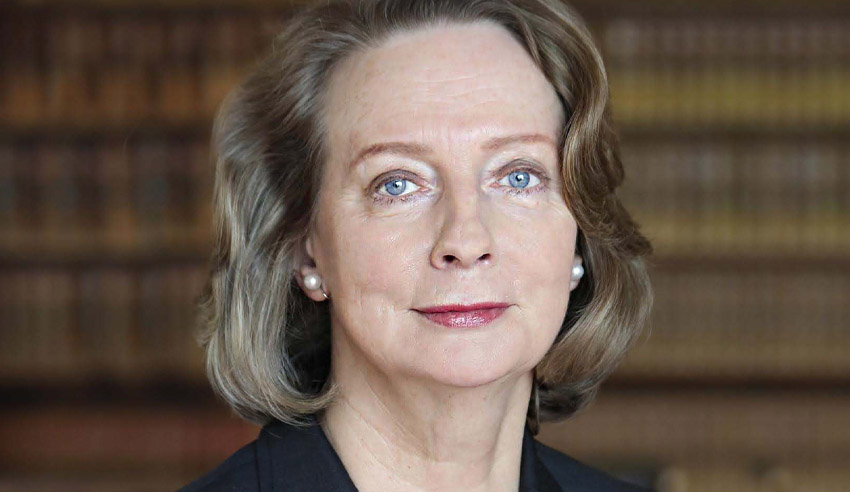A new study outlining the quantum of interruptions suffered by women justices of the High Court of Australia, relative to their male counterparts, draws attention to the barriers still faced by female lawyers – “even at the pinnacle of their legal careers”.

Source: hcourt.gov.au/justices/current/chief-justice-kiefel-ac
In a study published by the Melbourne University Law Review, Sydney-based legal researcher Amelia Loughland found that even women who have reached the apex of the legal profession continue to experience gendered behaviour.
“I also found that interruptions of female judges counterintuitively increased in 2017 when the court was first led by a female Chief Justice, the [Honourable] Susan Kiefel AC. The fact that everyday conversational patterns are replicated in the highest courts is surprising when considering how far removed formal oral argument is from the setting and norms of everyday conversation and illustrates how gendered norms transcend even the highest spheres of judicial authority.”
Ms Loughland’s study showed that, in 2015-16, the three female judges of the High Court collectively received 52 per cent of the total number of interruptions, compared to 48 per cent endured by the male judges.
She expected, she wrote, that the interruptions of women judges would subside following Justice Kiefel’s ascension to the role of Chief Justice in 2017, however she noted it in fact increased: the three female judges received 69 per cent of the total interruptions compared to just 31 per cent for the four males.
In exploring why such discrepancies might exist, Ms Loughland considered perhaps the women judges created more opportunities to be interrupted by virtue of speaking more frequently, but found that “by counting each judge’s total number of speech episodes, they spoke roughly in proportion to the representation of their gender on the court”.
“The slightly higher amount that female judges spoke in 2019 does not align with the far higher rate of interruption than that experienced by their male counterparts,” she wrote.
The notion that junior judges might experience more interruptions due to greater deference being shown to senior judges didn’t necessarily hold water either, Ms Loughland continued, when comparing the experience of two judges with comparable seniority: Justice Virginia Bell and Justice Stephen Gageler.
“In 2015-16, these two judges each spoke for about 11 per cent of the time. However, Bell J received 21 per cent of the total interruptions, and Gageler J only 6 per cent. This trend was amplified in 2017,” she wrote.
“It is improbable that Bell J’s slight seniority over Gageler J could explain the degree of discrepancy between their rates of interruption when considering that they spoke a similar amount in both periods.”
Another explanation considered by Ms Loughland was institutionalised gender bias.
“The different treatment of male and female judges by advocates also indicates that gender bias extends beyond the interpersonal to the institutional level on the High Court,” she wrote.
“Advocates demonstrated far greater deference to male judges after realising they had interrupted them. Although female judges were interrupted more often, there were fewer instances of this being acknowledged. Even where an advocate did acknowledge an interruption, they often persisted, rather than ceding the floor back to the interrupted female judge.”
The research ultimately gives the Australian legal profession cause, Ms Loughland concluded, to re-evaluate the progress supposedly made by the appointment of the nation’s first female Chief Justice.
“It shows that having women in superior positions of institutional authority is insufficient to transcend the fact that High Court dialogue is embedded in broader social discourses and power relations, meaning that female judges are treated as conversational inferiors and denied full participation in oral argument,” she surmised.
“[The research] should draw attention to the fact that despite women’s formal equality, they still face barriers in being treated as equal to their male colleagues, even at the pinnacle of their legal careers.
“To address this issue, the legal profession must “consciously draw male advocates’ attention to their differential treatment of High Court justices”, she opined.
“More importantly, the unequal treatment of men and women even at the height of the legal profession should be a wake-up call to the need for systemic change in the ontology of legal authority.”
The full citation for Ms Loughland’s study is: “Female Judges, Interrupted: A Study of Interruption Behaviour during Oral Argument in the High Court of Australia” (2019) 43(2) Melbourne University Law Review

Jerome Doraisamy is the managing editor of professional services (including Lawyers Weekly, HR Leader, Accountants Daily, and Accounting Times). He is also the author of The Wellness Doctrines book series, an admitted solicitor in New South Wales, and a board director of the Minds Count Foundation.
You can email Jerome at: